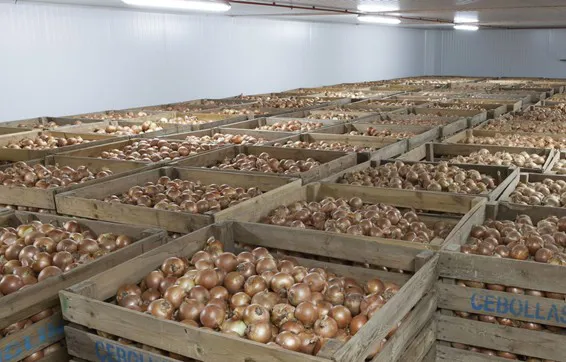Spanish onion sales remain stagnant and prices have yet to rebound; a result of the fact that the food service channel has yet to recover from the impact of the pandemic.
"The food service and hospitality channel is not yet working at full capacity in Europe, as tourism remains well below normal levels. This is a very important channel for the Spanish onion sector, as it absorbs around 36% of our entire production," says Luis Fernando Rubio, director of the Association of Onion Producers of Castile-La Mancha (Procecam), which brings together more than 140 producer members with an annual production of more than 540,000 tons.

After the good demand we saw at the beginning of the season for the first early onions, which was a result of a temporary shortage caused by the Ever Given incident in the Suez Canal, the demand has plummeted again.
"Early onions are mostly intended for the food service channel and the processing industry, as they have a shorter shelf life. The sector has been trying to sell the onions to retailers, but these have so far been more inclined to purchase southern hemisphere onions for storage. The demand for large early onions has therefore not been at the usual level and prices have plummeted below the production costs," says Luis Fernando Rubio.
The market is still very quiet, with very few operations, despite the fact that Medio Grano onions started to be harvested in Castile-La Mancha last week. However, European supermarkets are now beginning to make the switch from southern hemisphere onions to Spanish onions.
"The Medio Grano onions are allowing us to reach the market with tastier onions with a better color and shelf life. Thus, large European retailers are already switching from southern hemisphere onions (such as New Zealand onions, whose campaign is almost finished) to the ones from Spain and the rest of Europe. This will lead to a recovery in sales and prices in the retail channel in the coming weeks," says the director of Procecam.
"We expect tourism to reactivate soon, as restrictions are becoming less strict in all European countries. If this happens, the onion market will recover. The truth is that this year, Spanish onions have a quality like we hadn't seen for a long time. Except for some minor complications caused by the rain, which affected the onions intended for processing, the weather and milder temperatures this year have been greatly beneficial for the development of the bulbs."
As a result of the difficulties experienced by the Spanish onion sector last season, the acreage devoted to onion cultivation has been reduced by around 7% this year, especially in the province of Albacete, which is Spain's most important producer in terms of volume. Nevertheless, the yields are very good and are expected to be particularly high from July onwards. In mid-August, the harvest of Grano de Oro (or Recas) onions, the most exportable onion in Spain, will begin.
For more information:
Luis Fernando Rubio
PROCECAM
Calle San Clemente, 50
02600 Villarrobledo. Albacete. Spain.
lfrubio@procecam.es
www.procecam.es
